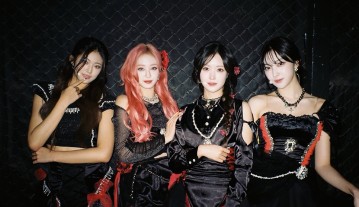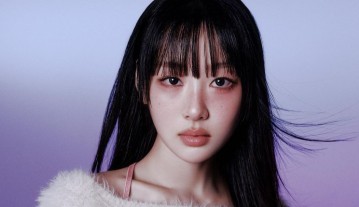The New Brooklyn Morbid Anatomy Museum Displays Korean Kokdu Doll, A Guide To The Afterlife [EXCLUSIVE]
At a flea market on the outskirts of Seoul, Korea, the Creative Director of Brooklyn, New York's Morbid Anatomy Museum, Joanna Ebenstein, bought a small wooden figurine called a kokdu doll. The artifact now sits atop a glass case in the library of the museum, beside a taxidermied squirrel, and is a representation of what the Morbid Anatomy Museum strives to communicate: death shouldn't be scary.
Korean kokdu dolls were used to decorate the funeral bier, which transported the coffin to the burial site. The deceased were believed to feel grieved and unstable on their way to leaving this world, so the kokdu kept the deceased company and guided them on their 40-day and 40-night journey though the underworld and to the afterlife. Kokdu's facial expressions - unlike what one might expect for a doll leading the dead - are warm and friendly, even cute.
"Korean folk art is some of the most charming I've ever seen, with heart, wit, and whimsicality. It's a very different approach to life and death," Ebenstein said.
The kokdu dolls' responsibilities include guiding, guarding, caring, and entertaining the dead on their journey. Kokdu guides are usually carved to represent movement, such as human figures riding dragons, phoenixes, or birds. Guarding kokdu dolls protect the deceased from evil spirits. These dolls carry weapons or have more menacing expressions. These guarding dolls can also come in the form of government officials or police officers carrying a rifle, especially after 1910. Caring kokdu dolls are usually depicted as women, and entertaining figurines are generally playing musical instruments.
Ebenstein's kokdu doll, on display at the newly-opened Morbid Anatomy Museum in Gowanus, Brooklyn, appears to be a guiding figurine. A man wearing a black hat and decorated pink outfit rides a creature of some sort, leading the deceased to the world of the afterlife.
As Ebenstein writes in her blog post about her 2011 visit to The Kokdu Museum in Seoul, most of the dolls come from the late 18th century during the Joseon Dynasty. They are seen as "manifestations of the spirit," Ebenstein said.
While one might find the kokdu dolls' happy expressions unusual for funeral decoration, Ebenstein doesn't find it strange at all. In fact, she explains that the sadness surrounding dying and funerals is a rather new phenomenon and in the past mankind had a much closer association to our mortality. Perhaps with more sickness and less longevity, death felt closer then than it does now. Our constant fight for longer and healthier living might have made us see death as an unfortunate and involuntary end.
Visitors at the Morbid Anatomy Museum are allowed to touch objects in the library, including the kokdu doll, which is unlabeled like the rest of the items on display. Joanna makes herself available at a large wooden table in the center of the library, open to anyone who wants to do research and read her extensive collection of books on subjects from La Santa Muerte and Korean folk funeral processions.
"I like the mystery," Joanna says about the lack of labels for the artifacts in the library.
The museum's relaxed environment and visitors' close proximity to the owner is intentional; Joanna wants the museum to feel "handmade and relatable... pairing grandeur with a certain sense of humor."
Admission fee is $10 and the museum is open from noon to 6pm everyday except for Tuesdays. Click here for more information about upcoming events.










